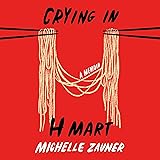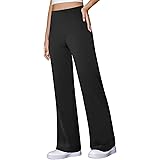Are you constantly searching for the answer to what the best bread truly is amidst the sea of options at the grocery store? The short answer, as our video above succinctly highlights, often involves a deeper dive beyond surface-level claims. While many loaves proudly display “whole grain” labels, a closer inspection of the ingredient list reveals a more nuanced reality for those striving for optimal nutrition and genuine wellness.
For the health-conscious consumer, navigating the bread aisle can be surprisingly complex. This guide aims to demystify the process, expanding on the crucial insights shared in the video, so you can confidently select the healthiest bread options for yourself and your family.
Beyond the “Whole Grain” Hype: Unmasking Hidden Sugars
As the video astutely points out, “whole grain” doesn’t automatically equate to superior health. Consider the widely popular Dave’s Killer Bread mentioned. Despite its organic, whole-grain credentials and appealing branding, a single slice contains five grams of added sugar. For context, making a simple sandwich with two slices means you’re consuming approximately 2.5 teaspoons of added sugar – just from the bread!
From an expert perspective, this level of added sugar, often disguised as ingredients like cane sugar, molasses, or honey, significantly diminishes the health benefits of whole grains. The American Heart Association (AHA) recommends no more than 25 grams (about 6 teaspoons) of added sugar per day for most adult women and 36 grams (about 9 teaspoons) for most adult men. Children should consume even less. Consequently, a single sandwich can contribute a substantial portion of the daily recommended limit, potentially leading to rapid blood sugar spikes, subsequent energy crashes, and long-term implications for metabolic health.
Therefore, a critical first step when evaluating any “healthy” bread is to scrutinize the nutritional panel for added sugars. Prioritize brands that list zero or minimal added sugars per serving.
The Deception of Enriched Flour: Why Ingredients Matter
Another common pitfall highlighted by the video is the prevalence of enriched wheat flour in many commercial breads. This isn’t just a minor detail; it’s a fundamental difference that impacts nutritional value and how your body processes the carbohydrate.
Traditional wheat kernels consist of three main parts: the bran (fiber-rich outer layer), the germ (nutrient-dense embryo), and the endosperm (starchy inner part). When wheat is refined to make white flour or “enriched” flour, the bran and germ are typically removed. This stripping process eliminates the majority of the fiber, B vitamins, iron, and other essential minerals. While some nutrients are “enriched” or added back synthetically, they often lack the complex bioavailability of their naturally occurring counterparts and certainly do not replace the crucial dietary fiber.
Consequently, breads made with enriched flour behave more like simple carbohydrates in the body. They are rapidly digested, leading to a quicker rise in blood glucose levels, a higher glycemic index, and a less sustained feeling of fullness compared to true whole grains. For those managing blood sugar, seeking sustained energy, or simply aiming for better overall health, avoiding enriched flours is paramount.
The Superiority of Sprouted Whole Grains for Optimal Health
So, if conventional whole grain breads often contain hidden sugars and enriched flours are a no-go, what is the optimal choice? As the video unequivocally states, sprouted whole grain bread stands out as the gold standard. Brands like Ezekiel and Silver Hills are prime examples of this superior category.
Unlocking Nutrition Through Sprouting
The magic of sprouted grains lies in their unique processing. Sprouting involves soaking whole grains (or legumes) in water until they begin to germinate, a process that initiates enzymatic changes within the grain. This germination process offers several distinct advantages:
- Enhanced Digestibility: Sprouting breaks down complex starches and gluten proteins, making the grains easier for your body to digest. This is particularly beneficial for individuals who experience digestive discomfort with traditional bread.
- Increased Nutrient Bioavailability: Phytic acid, an “anti-nutrient” present in unsprouted grains, can bind to minerals like zinc, iron, and calcium, hindering their absorption. Sprouting significantly reduces phytic acid, thereby “unlocking” and increasing the bioavailability of these vital nutrients.
- Higher Vitamin Content: The sprouting process can boost the levels of certain vitamins, including B vitamins and vitamin C, and even increase antioxidant activity within the grain.
- Lower Glycemic Index: Some research suggests that sprouted grains may have a lower glycemic index compared to their unsprouted counterparts, contributing to more stable blood sugar levels.
Ezekiel and Silver Hills: Premier Sprouted Options
The video aptly names Ezekiel bread as “the OG” of sprouted bread, and for good reason. This organic, truly sprouted option is made from a blend of sprouted wheat, barley, beans, lentils, millet, and spelt, offering a comprehensive nutrient profile. Its dense, hearty texture is a testament to its whole-food nature, though as the video notes, it may not appeal to every palate, especially younger children.
For those seeking a lighter, more approachable sprouted option, Silver Hills Sprouted bread in the blue bag is an excellent recommendation. Described as “light and pillowy,” it maintains the nutritional benefits of sprouted grains while offering a texture that is far more palatable for a wider audience, including picky eaters. The claim of making a “killer grilled cheese sandwich” is certainly a testament to its versatility and appeal.
Beyond the Aisle: Other Exceptional Bread Choices
While sprouted whole grain breads are top-tier, the quest for the best bread also encompasses other high-quality alternatives that prioritize traditional preparation and wholesome ingredients. Expanding our discussion, two noteworthy contenders emerge:
Traditional Sourdough Bread
True sourdough bread, made with a slow, natural fermentation process using a wild yeast starter, offers several benefits akin to sprouting. The long fermentation time helps break down gluten and phytic acid, improving digestibility and nutrient absorption. Additionally, it creates beneficial lactic acid bacteria, which can contribute to gut health. When selecting sourdough, ensure it’s made with 100% whole grain flour and has undergone a genuine long fermentation, not just sour flavoring added to commercial yeast bread.
100% Rye Bread (Pumpernickel or Volkornbrot)
Another excellent choice, particularly for those seeking dense, fiber-rich bread with a low glycemic impact, is 100% rye bread. Varieties like German Pumpernickel or Volkornbrot are made from whole rye kernels and often fermented slowly. Rye has a unique fiber structure that can lead to a more gradual release of glucose into the bloodstream, making it a favorable option for blood sugar management.
Becoming an Ingredient Label Expert: What Else to Look For
Beyond identifying whole or sprouted grains and avoiding enriched flour and excessive added sugar, becoming proficient in reading ingredient labels is your most powerful tool. When selecting the best bread, also look out for:
- Minimal Ingredients: A shorter, simpler ingredient list is generally a good sign. Focus on recognizable, whole food ingredients.
- Organic Certification: Opting for organic bread helps avoid pesticides and genetically modified organisms (GMOs).
- Healthy Fats: If fats are included, ensure they are healthy options like olive oil or avocado oil, rather than hydrogenated oils or highly refined vegetable oils.
- No Artificial Preservatives or Dyes: These additives offer no nutritional benefit and are best avoided.
In conclusion, the journey to finding the best bread at the grocery store requires diligence and an understanding of what truly constitutes a healthy loaf. By prioritizing sprouted whole grains, traditional sourdough, or 100% rye, and meticulously scrutinizing ingredient labels for hidden sugars, enriched flours, and artificial additives, you can elevate your nutritional intake and make choices that genuinely support your well-being. The emphasis remains on quality ingredients, minimal processing, and a genuine commitment to providing your body with nutrient-dense fuel.











